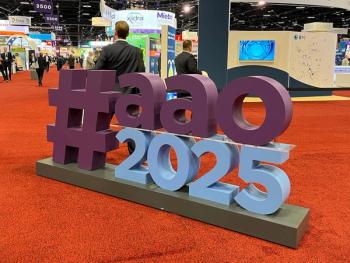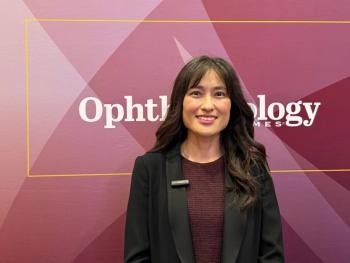
Y-fixation technique: Why not?
The Y-fixation technique is a method of sutureless IOL intrascleral fixation that requires less complicated manipulations and results in better closure than alternatives of its type.
TAKE HOME:
The Y-fixation technique is a method of sutureless IOL intrascleral fixation that requires less complicated manipulations and results in better closure than alternatives of its type.
By Cheryl Guttman Krader: Reviewed by Toshihiko Ohta, MD
Shizuoka, Japan-The Y-fixation technique is an effective method for sutureless IOL intrascleral fixation that is simpler and safer than alternative approaches for intrascleral IOL fixation, according to Toshihiko Ohta, MD.
The Y-fixation technique can be used when implanting an IOL in an aphakic eye without support for a posterior capsule (PC) IOL as well as for repositioning a subluxated PC lens, and it is applicable for 3-piece IOLs.
It is performed using a 24-gauge MVR knife to first create two Y-shaped half-thickness incisions in the sclera, 2 mm from the limbus, and then to form a scleral tunnel at the end of the Y-shaped incision.
“We expect to develop the Y-fixation technique further in the future,” said Toshihiko Ohta, MD, professor of ophthalmology, Juntendo University Shizuoka Hospital, Shizuoka, Japan. “However, our experience using it so far in numerous eyes demonstrates that it delivers anatomically and optically stable results.”
How it’s done
In the case of a dislocated IOL, vitrectomy is performed as needed and the IOL is brought forward. Then, one haptic tip is extracted into the scleral tunnel using a vitreous forceps and the step is repeated with the opposite haptic using a U-shaped hook or a push-and-pull hook held in one hand and vitreous forceps in the other.
Once the haptics are positioned within the scleral tunnel, a single 8-0 nylon suture is used to suture the scleral bed to prevent IOL shifting, and the sclera is sutured with 8-0 Vicryl.
When implanting an IOL into an aphakic eye, a forceps held in the left hand is used to grasp the leading haptic as it begins to extrude from the injector tip. The haptic tip is pulled through the sclerotomy and externalized on the left side.
Next, the IOL is fully released as the injector is withdrawn, the trailing haptic is inserted into the anterior chamber with forceps, and the IOL is centered using a U-shaped hook or a push-and-pull hook.
Then, the tip of the haptic is grasped with the forceps, externalized through the sclerotomy, and the procedure is completed as described above.
Less complicated, lower complication rates
Methods for sutureless intrascleral fixation of the IOL by securing the haptic to the inner surface of the sclera have been described by others, Dr. Ohta noted.
For example, in a technique by Gabor et al., a 24-gauge needle is used to create a straight sclerotomy. Then, using a vitreous forceps, the haptics are brought into the ciliary sulcus through a parallel scleral tunnel.
Alternatively, Agarwal et al. introduced the glued IOL technique in which a 22-gauge needle is used to create a straight sclerotomy and fibrin glue is used to attach the extracted haptics within the scleral tunnel and to seal the scleral flaps and overlying conjunctiva.
“In the technique by Gabor et al. it is difficult to extract the haptics, only a 3-piece IOL can be used, and the closure is problematic,” Dr. Ohta said. “The technique by Agarwal also has problems with the closure, as well as with postoperative hypotony, and it necessitates creation of a lamellar scleral flap as well as the use of fibrin glue.
“Our technique avoids the need for a large lamellar scleral flap, while our approach for performing the sclerotomy with the MVR knife simplifies extraction of the haptic and greatly improves incision closure,” Dr. Ohta continued. “In addition, the Y-fixation technique can be done with only one pair of vitreous forceps, whereas the other intrascleral fixation techniques require two.”
As shown in outcomes analyses, the Y-fixation technique also has benefits compared with IOL suture fixation methods for minimizing complications and providing better optical results.
Case series
In a series of 44 eyes managed with the Y-fixation technique, vitreous hemorrhage and temporary increase in IOP were the most common complications, each occurring at a rate of 9%.
The rate of vitreous hemorrhage in a comparator group of 38 eyes was 18% and significantly higher than in the Y-fixation series, while there was no significant difference between groups in the rate of temporary IOP elevation.
However, the incidence of IOL dislocation/tilt was also significantly higher in the sutured fixation group compared with the eyes operated on with the Y-fixation technique (18% versus 5%).
Consistent with the latter results, mean IOL astigmatism, calculated by subtracting corneal astigmatism from total astigmatism, was significantly less in eyes that underwent the Y-fixation procedure compared with eyes having a sutured IOL (0.51 versus 0.84 D).
“However, there was no significant difference in IOL astigmatism comparing the Y-fixation eyes with a control group having an in-the-bag IOL,” Dr. Ohta concluded.
Toshihiko Ohta, MD
E: oha803mist.ocn.ne.jp
Dr. Ohta has no relevant financial interests to disclose.
Newsletter
Don’t miss out—get Ophthalmology Times updates on the latest clinical advancements and expert interviews, straight to your inbox.



















































.png)


